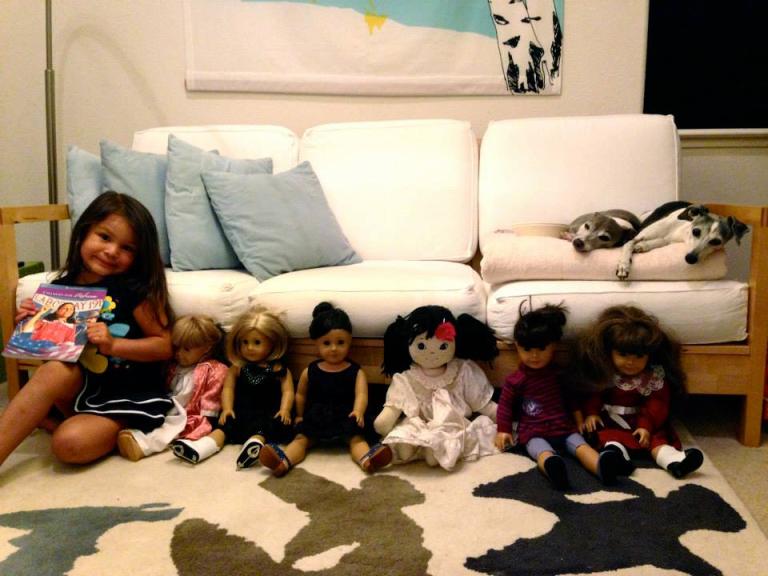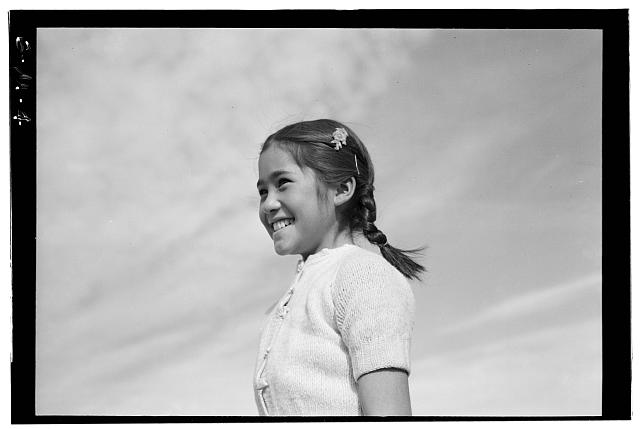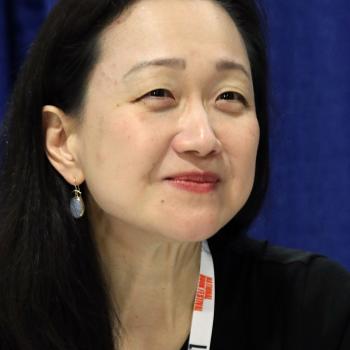
American Girl recently announced its newest doll of the year: Corinne Tan, a Chinese American girl who lives in Colorado and fights anti-Asian racism. “We knew it was important for Corinne’s story to show the unfortunate rise in anti-Asian sentiment across the U.S. since the pandemic,” an American Girl spokeswoman said, according to the New York Times.
Like many others, I’m grateful that American Girl created this doll. As a mother, I’m thankful to show my daughter a storybook protagonist who looks like her and reflects Asian American experiences. As a teacher, I’m excited to have another resource to educate children about Asian American perspectives. And as a scholar who has spent the past two years researching how Asian Americans have been targeted in acts of coronavirus-related discrimination and hate, I’m glad that American Girl is calling attention to the pressing issue of contemporary anti-Asian racism, a problem that I expect won’t go away even if the pandemic subsides, given the context of ongoing U.S.-China tensions.
But as a historian who first developed a love of studying the past because of reading American Girl books in the 1990s, I admit that I’m wary.
My concern isn’t about Corinne and her story, but where she fits into the broader offerings of American Girl and what the company’s choices say about where Asian Americans belong in American history. You see, Corinne is a “Girl of the Year” doll–a contemporary character–and through her, American Girl focuses primarily on Asian Americans and our experiences with racism in the current moment. But American Girl has no Asian American historical characters, despite the fact that educating children about the past has been central to the work of American Girl since its founding nearly four decades ago.* In this way, American Girl upholds a narrative that is unfortunately all too common: one that asserts that Asian Americans are recent arrivals in the United States, that our experiences with racism are new, and that we’re only now learning to find our voice to speak out against injustice.
Ultimately, by having only a contemporary Asian American character, American Girl reproduces a powerful and dangerous fiction that Asian Americans–especially Asian American women–are not truly part of our nation’s history. But here’s the truth: Asian Americans have been here for a long time, and we’ve been vocal about our pursuit of justice for a long time. American Girl, like the rest of America, perhaps only chose to notice us as a result of the pain of the past year. However, truly and responsibly seeing us requires paying attention to the struggles of our ancestors, not only the stories of our people in the present.
Before going further, I acknowledge that some readers might be asking a couple simple questions. What’s the big deal? American Girl is just dolls and books, right?
It’s more than that, actually. According to the religion scholar Rachel Gross, author of the book Beyond the Synagogue, children’s books and toys play an important role in creating a sense of nostalgia, which she considers a religious practice of American Judaism and a practice of American civic religion more generally. Dolls and storybooks like those created by American Girl facilitate “an intimate nostalgia that uses the past and present to construct one another and to shape the future.” And, as Gross points out, American Girl as a company has always endeavored to be more than dolls and books. She writes,
“American Girl’s mission has been a project of defining Americans from its inception…The popularity of American Girl products has made the racial diversity of their characters a subject of national discourse. To many consumers, these are not ‘just dolls,’ but a semi-official statement articulate different categories of Americans.”
In making this point, Gross quotes Pleasant Rowland, who founded American Girl in 1986. “We give girls chocolate cake with vitamins,” Rowland said. “Our books are exciting, our magazine is fun, and our dolls are pretty. But most importantly, they all give girls a sense of self and an understanding of where they came from and who they are today.”
Giving children “a sense of self and an understanding of where they came from and who they are today”: I can’t imagine a more important thing for Asian American young people to have in the current moment. As a scholar who researches, writes, and teaches about Asian American history and as an activist who does regular outreach to Asian American churches and community organizations, I’ve given countless presentations to young Asian American audiences who are hungry to learn about their past. They need to know–and they want to know–that their experiences with racism are not new and that Asian Americans have long been involved in struggles for justice. Time and again, I’ve been saddened to hear Asian American youth lament that they don’t have any role models for justice work. “My grandparents and parents never complain; they’re Asian, so it’s their culture to just keep their head down,” these students say. But here’s my point: if these students were actually taught Asian American history, they would know that “culture” hasn’t stopped Asian Americans from taking courageous action on a range of issues, from racism and religious discrimination to war and worker rights. And teaching Asian American history isn’t just for Asian Americans. We owe all Americans a truthful and inclusive telling of our nation’s past. All American youth–not just Asian Americans–need to know this: Asian American history is American history.
As a faculty member in the Asian/Pacific Islander American Studies Program at the University of Michigan, I regularly teach a course on Asian American history. Well before Corinne Tan came along, I offered my students the option of doing a final project in which they create a new American Girl character and write a historical short story featuring an Asian American protagonist inspired by our course readings. Here are some of the characters my class has created over the years:
- A mixed race daughter of an Irish woman and a Chinese man in lower Manhattan in the early 19th century (inspired by New York Before Chinatown by John Kuo Wei Tchen).
- A Chinese American girl living in late 19th century San Francisco, where her parents advocated for her right to attend public school with white children (inspired by the true story of Mamie Tape and The Lucky Ones by Mae Ngai).
- A daughter of Mexican and Punjabi immigrants living in a southern California farming community in the early 20th century (inspired by Making Ethnic Choices: California’s Punjabi Mexican Americans by Karen Leonard).
- A girl living in the Philippines after it became a colony of the United States following the brutal Philippine-American war. She considers studying at one of the American nursing schools (inspired by Empire of Care by Catherine Ceniza Choy).
- A Japanese American Buddhist girl who struggles to keep hope and faith alive when she is incarcerated during the Second World War (inspired by American Sutra by Duncan Williams).
- A mixed-race child of a Black woman and a South Asian immigrant living in the Tremé neighborhood of New Orleans in the middle of the 20th century (inspired by Bengali Harlem and the Lost Histories of South Asian America by Vivek Bald).
- A girl from Korea who is adopted by a white family in Wisconsin after the Korean War (inspired by To Save the Children of Korea by Arissa Oh).
- A Hmong American girl who was resettled as a refugee in Minnesota in the 1980s (inspired by Kao Kalia Yang’s The Late Homecomer).
- A Korean American girl who struggles to understand the racial tensions and violence that erupted in 1992 Los Angeles (inspired by Blue Dreams by John Lie and Nancy Abelmann).
As these examples illustrate, there are no shortage of possibilities for historical stories about Asian American experiences. Scholars have been writing about Asian American history for a long time, and American Girl can do it, too.
To be sure, there are reasons to be optimistic that American Girl and other institutions will pay more attention to Asian American history. According to news reports, American Girl is partnering with the youth organization AAPI Youth Rising, which supports teaching Asian American history in K-12 schools. The organization’s advocacy is part of a broader effort to change history curriculum to include Asian American experiences. In a few places–Illinois and New Jersey, for example–state legislatures recently passed bills to ensure that Asian American history is taught in primary and secondary school classrooms.
But as the creator of wildly popular dolls and books, American Girl is in a particularly powerful position to educate American youth about Asian American history. If American Girl sincerely strives to “give girls a sense of self and an understanding of where they came from and who they are today,” as Pleasant Rowland put it, then a historical series about an Asian American main character is long overdue.
American Girl deserves praise for helping to tell the stories of Asian Americans in the present. But when it comes to Asian Americans, I’d love to see American Girl do more of what it does best: telling the stories of diverse Americans–including Asian Americans–in the past.
* A few important notes: I must acknowledge that American Girl did create Ivy, the Chinese American friend of Julie, a historical character living in San Francisco in the 1970s. However, I don’t consider Ivy here because American Girl discontinued her a few years ago. Importantly, Ivy was also a second-tier character who didn’t get her own series, and on this point, you can see another classic stereotype at work–that of the Asian American sidekick who doesn’t merit being a main character. Currently, American Girl has a historical character named Nanea, who is part Hawaiian and part Scottish-American and who lives in Hawaii during the Second World War. In the stories, Nanea does witness anti-Japanese racism, but she herself is not Japanese American. I should also add that Hawaiians, as Pacific Islanders , are included in the category of “AAPI.” (“AAPI” means Asian Americans and Pacific Islanders.) But in this essay, I’m writing specifically about Asian Americans, whose experiences are distinct from Pacific Islanders. Given the differences between these two groups, it’s worth noting that the category of “AAPI” continues to be debated.














